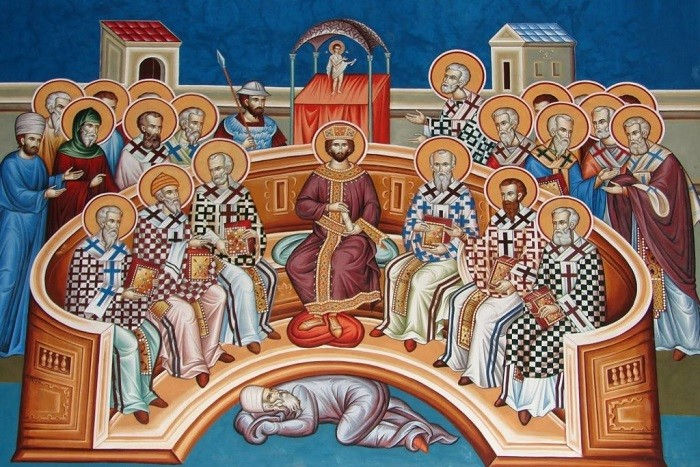1700 years ago: The Council of Nicaea
- holytrinitynz
- Aug 12, 2025
- 3 min read
Updated: Aug 28, 2025
By Fr Ivica Gregurec, Cathedral Precentor of Holy Trinity Cathedral
This is the first in a series of three blog posts on the history of the Council of Nicaea written by Fr Ivica.
This year marks the 1700th anniversary of the first ecumenical council in Christian history—the Council of Nicaea, held in 325 AD in the city of Nicaea, now the modern-day Turkish town of İznik.
Only a decade earlier, Emperor Constantine had laid the foundation stone for a new imperial see at the small village of Byzantium, which would soon become Constantinople. In 313 AD, with the Edict of Milan, Christianity was granted freedom of worship. While it was not yet the official religion of the Roman Empire, it gained equal status alongside other faiths, ending centuries of persecution.
At the time, the Christian Church was experiencing a major internal schism. A priest from Alexandria in Egypt, Arius, is attributed with the teaching that denied the divinity of Jesus Christ claiming that he was a created being—the most perfect of God’s creations, yet distinct from God Himself. This teaching, known as Arianism, clashed with the understanding of Christ upheld by many of the Byzantine Church leaders, and it spread rapidly across much of Christian Europe.
Seeking unity, Emperor Constantine called for an unprecedented gathering — the first ecumenical council in Christian history. Up to 318 bishops, representing regions from across the known world, attended. Some likely bore the physical scars of the brutal persecutions under Emperors Diocletian and Galerius.

Despite intense debate, political pressure, and the emperor’s own influence, the bishops reached agreement on a statement of faith — the first Nicene Creed — affirming the divinity of Jesus Christ as “of one substance with the Father.” The creed addressed the relationship between God the Father and the Son; the Church’s teaching on the Holy Spirit would be further developed at the Second Ecumenical Council in Constantinople in 381 AD.
Arius himself died in 336 AD, in what tradition describes as a most disgraceful manner.
Below is the text of the first Nicene Creed as agreed at Nicaea in 325 AD:
We believe in one God,
the Father almighty,
maker of all things visible and invisible.
And in one Lord, Jesus Christ,
the Son of God,
begotten from the Father,
only-begotten, that is, from the substance of the Father,
God from God, light from light,
true God from true God,
begotten not made,
of one substance with the Father,
through Whom all things came into being,
things in heaven and things on earth,
Who because of us and because of our salvation came down,
and became incarnate
and became man,
and suffered,
and rose again on the third day,
and ascended to the heavens,
and will come to judge the living and dead,
And in the Holy Spirit.
But as for those who say, There was when He was not,
and, Before being born He was not,
and that He came into existence out of nothing,
or who assert that the Son of God is of a different hypostasis or substance,
or created,
or is subject to alteration or change
- these the catholic and apostolic Church anathematises.
Fr Ivica Gregurec
Cathedral Precentor
Holy Trinity Cathedral
Upcoming post: The First Council of Constantinople: The Creed We Know Today


The gathering resulted in the formulation of the 1v1 LOL Nicene Creed, a foundational statement of Christian belief that is still recited today.
great
The Council of Nicaea remains a fascinating turning point in history. Just as faith and art intersect, a Pop Art Illustration Company in Canada can capture powerful stories from the past and reimagine them in bold, contemporary visuals.
Geometry Dash Lite doesn't require an internet connection, making it a great offline game for passing time during commutes, travel, or just relaxing without distractions.